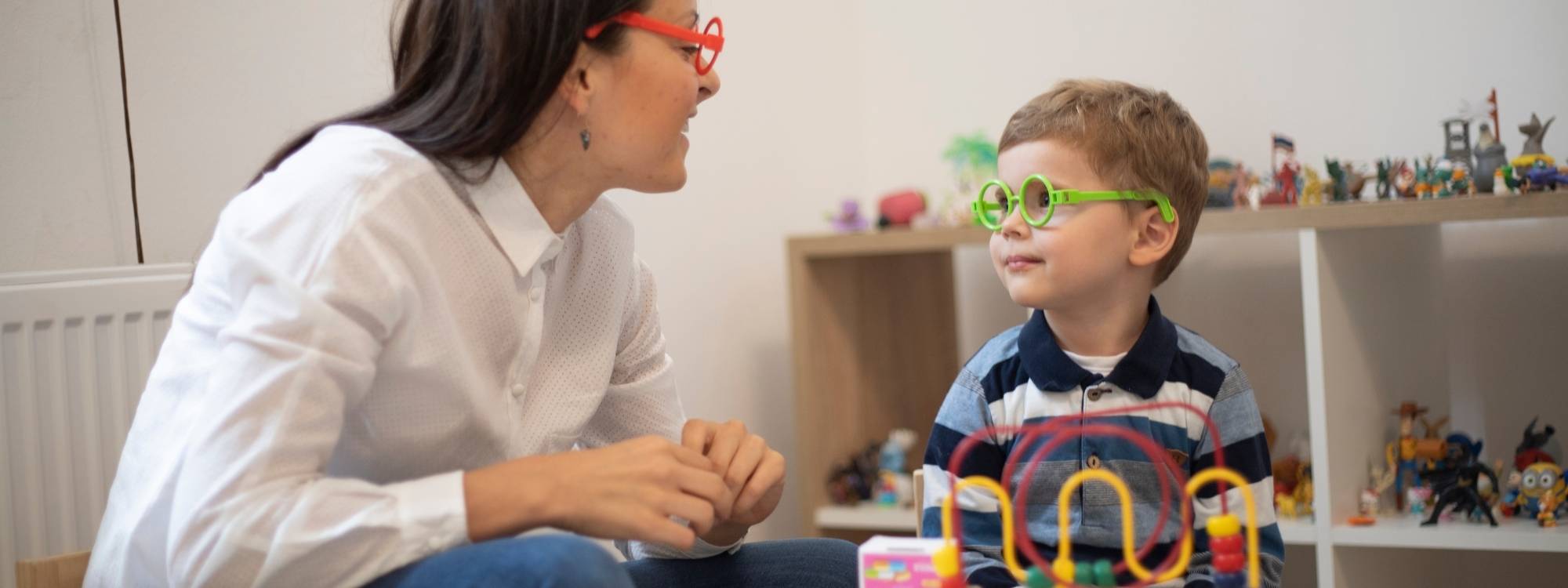Potty Training Autism: A Step-by-Step Guide for Parents
Potty Training Autism can be a challenging milestone for any child, but for autistic children, the process often requires additional patience, structure, and tailored strategies. Many children on the autism spectrum experience sensory sensitivities, communication barriers, and routine-related challenges that can affect toilet training success. Understanding these unique factors and implementing structured toilet training interventions can make the transition smoother. This comprehensive guide provides evidence-based strategies, expert insights, and actionable steps to help parents and caregivers effectively potty train their autistic children. From recognizing the right time to begin potty training to overcoming common hurdles, this guide ensures a structured approach that fosters independence and confidence.
When to Start Toilet Training an Autistic Child
Determining the right time to start potty training an autistic child can be complex. Unlike typically developing children, autistic kids may show readiness autism affects potty training at different stages due to delays in communication, sensory sensitivities, or resistance to routine changes. Some children may have a strong preference for routine, making it difficult to introduce new habits like using the toilet. Others may struggle with interoception, the ability to recognize internal body signals, which can delay their understanding of when they need to use the restroom.
Signs of Readiness
- The child stays dry for at least two hours at a time, indicating some bladder control.
- Shows interest in the toilet or expresses discomfort when wearing soiled clothes or pull-ups.
- Can pull pants up and down independently or with minimal assistance.
- Responds to visual cues or verbal prompts related to the toilet routine.
- Demonstrates an awareness of bowel movements by hiding or signaling before going.
Since autism spectrum disorder affects each child differently, it is essential to adjust expectations and move at the child’s pace. Parents should also consider sensory sensitivities and sensory issues that may impact how the child perceives the toilet seat, flushing sound, or wet wipes.
Preparing for Toilet Training Success
Preparation is key to a successful potty training process. Creating a structured and predictable environment can help children feel more comfortable and secure. A well-thought-out plan ensures consistency, which is crucial for children who thrive on routine. Parents should also be mindful of their child’s specific needs, such as sensory sensitivities or communication barriers, and adjust their approach to delay toilet training accordingly. By incorporating strategies that align with the child’s learning style, the transition to independent toileting can become smoother and more effective.
Establishing a Toileting Routine
- Introduce a visual schedule with images depicting each step of the toileting routine.
- Start by having the child sit comfortably on a small potty chair or training seat at regular times of the day, even if they don’t use it right away.
- Use social stories to help the child understand the potty training process and what is expected of them.
- Provide verbal prompts and encourage independence by having the child participate in tasks like flushing the toilet and washing their hands.
Sensory-Friendly Bathroom Adjustments
- Reduce noise sensitivities by keeping the bathroom door open or letting the child flush the toilet at their own pace.
- Ensure the child’s feet are supported with a small step stool to enhance comfort.
- Offer sensory-friendly options such as fragrance-free wet wipes instead of toilet paper to ease discomfort.
- Adjust lighting and minimize distractions in the bathroom to create a calm, positive experience.
By setting up an environment for toilet training children tailored to the child’s needs, many parents find that potty training becomes a more manageable process.
Step-by-Step Guide to Toilet Training
Step 1: Introducing the Toilet
Some autistic children have difficulty accepting new routines, so gradual exposure to the toilet is essential. Allow the child to explore the toilet seat and training area without pressure. Reading books or watching videos about potty and toilet training tips can also create familiarity. Parents can also model toilet use by allowing the child to observe siblings or caregivers using the bathroom to build comfort. Additionally, using a designated potty-training toy or doll can help demonstrate the process in a non-threatening way.
Step 2: Encouraging Sit Time
Start by encouraging the child to sit on the potty for a few seconds at a time, gradually increasing the duration. Use positive reinforcement, such as praise, stickers, or a favorite activity after each attempt. It may also help to incorporate a visual schedule or timer to signal when it’s time to sit on the potty. Consistency is key, so ensuring that these sitting sessions happen at the same time each day can reinforce the routine effectively.
Step 3: Developing a Predictable Schedule
- Observe the child’s toileting patterns and encourage potty trips at consistent times.
- Set reminders or use timers to establish a predictable routine.
- Encourage the child to communicate when they need to go using the Picture Exchange Communication System (PECS) if verbal communication is limited.
Step 4: Handling Accidents Positively
Accidents are a normal part of potty training. Respond calmly, avoid punishment, and reinforce the idea that the toilet is the appropriate place for waste elimination. Use gentle reminders and provide reassurance that mistakes are a natural part of learning. It may also help to have a backup set of clothes nearby and involve the child in the clean-up process to encourage responsibility and reinforce the toileting routine.
Step 5: Transitioning to Independence
- Gradually reduce prompts and encourage the child to initiate bathroom trips independently.
- Teach proper hand washing techniques and reinforce hygiene habits with visual sequences.
- Adapt strategies as needed for older children who may require additional interventions.
Common Toilet Training Challenges & How to Overcome Them
Resistance to Change
Many autistic children struggle with transitions, including moving from diapers to underwear. Introduce changes gradually, such as allowing the child to wear underwear for short periods during the day. It can also help to let the child choose their underwear with a favorite character or color to increase their interest in the transition. Providing positive reinforcement each time they successfully wear underwear, even for short durations, can encourage them to feel comfortable with the change.
Communication Barriers
For nonverbal children, alternative communication methods like visual supports, sign language, or communication devices can help them express when they need to use the toilet. Picture-based systems, such as PECS, can be particularly effective in bridging the communication gap. Additionally, some children may respond well to gesture-based cues or simple hand signals to indicate their need to use the bathroom.
Sensory Sensitivities
Children with sensory processing difficulties may struggle with different aspects of potty training. Allow adjustments like using a training seat instead of a full toilet and avoiding strong-smelling cleaning products. Some children may prefer a specific type of toilet paper or wet wipes due to texture sensitivities. Additionally, experimenting with different water temperatures for hand washing can help make the sit-on-the-toilet experience more comfortable for children with heightened sensory awareness.
Positive Reinforcement & Motivation Strategies for Toilet Training
Using Reward Systems
- Implement a reward chart with stickers to track progress.
- Provide immediate reinforcement, such as praise or a small treat, for successful attempts.
- Encourage gradual independence by phasing out external rewards over time.
Regression & Setbacks in Toilet Training: What to Do
Regression in potty training can occur due to illness, stress, or changes in a child’s daily routine. If setbacks happen, return to the basics by reinforcing the established routine and maintaining a positive attitude. It’s important to recognize that regressions are a normal part of the learning process and should not be seen as failures. Offering extra encouragement and returning to previously successful strategies can help rebuild confidence and consistency.
Expert Advice & Real-Life Success Stories on Toilet Training
Pediatricians and occupational therapists recommend a flexible approach tailored to the child’s unique needs. Real-life experiences from parents highlight the importance of patience and consistency in achieving toileting success. Experts also emphasize that every child will progress at their own pace, and forcing the process can create unnecessary stress. Additionally, collaborating with educators and therapists can provide further guidance and support in reinforcing toileting habits across different environments.
Conclusion
Potty training an autistic child requires patience, structure, and individualized strategies. By implementing sensory-friendly environments that offer positive reinforcement, structured routines, and positive reinforcement techniques, parents can encourage toileting success. Each child progresses at their own pace, and celebrating small victories can make a significant difference in the potty training journey.
Struggling with potty training for your autistic child? Champions ABA provides expert guidance and personalized support to make toilet training easier. Call (877) 242-1744 or visit our website today to learn how our tailored intervention programs can help!
FAQs: Potty Training Autism
At what age is an autistic child potty trained?
There is no set age for potty training autistic children. Some begin training around the same age as typically developing children (2-4 years), while others may need more time due to developmental delays.
Does autism make it hard to potty train?
Yes, for children with autism, it can affect potty training due to sensory sensitivities, routine rigidity, and communication challenges. However, structured interventions and consistent routines can improve success rates.
What are healthy habits for autism?
Encouraging a consistent daily routine, promoting independence and new skills, and fostering positive experiences with self-care activities, such as hand washing and dressing, are essential for developing lifelong skills.
Do autistic children struggle with toileting?
Many autistic children face challenges related to toileting, including sensory processing issues, difficulty recognizing bodily cues, and resistance to change. Using visual schedules and positive reinforcement can help mitigate these challenges.



